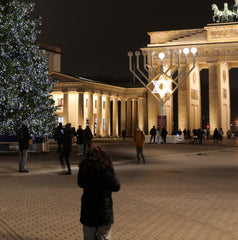Each year it seems that the seasons change a little, and become less defined, yet certain traditions and festivities prevail to this day.
Typically, the meteorological winter here in the Northern Hemisphere begins each December and ends in March, lasting on average around 89 days.
Winter solstice, the shortest day of the year (and longest night), falls on the 21st or 22nd December, and is observed worldwide in many different ways. The Hopi Indians celebrate Soyal, one of their most important ceremonies, in which they call the sun back from its winter slumber.
Winter solstice was also traditionally honoured by the pagan celebration of Yule to mark the return of the Sun and to rejoice in the knowledge that the earth would soon come back to life during the imminent warmer days of Spring.
This was observed in many ways, some of which may be familiar including the Yule log ceremony, which began in Norway, when families would burn a giant log on the hearth to symbolise the returning sun’s blaze. Throughout ancient Ireland and the UK pieces of cloth would be tied to trees as offerings or prayers, and this idea of a ‘holiday tree’ decorated with trinkets and baubles has been adopted by other celebrations, most notably by the Christian observance of Christmas, and endures to this day.
The ancient Roman holiday of Saturnalia originated as a ‘farmer’s festival’ and paid tribute to the god of agriculture, Cronos (Saturn), to acknowledge the end of the planting season. Its duration grew over the centuries, and moved to progressively later dates until it culminated in a climax around the time of the winter solstice. According to History Today, the public holiday was celebrated on 25th December in the family home and was “a time for feasting, goodwill, generosity to the poor, the exchange of gifts and the decoration of trees”, and is posited to have been a progenitor to Christmas.
Las Posadas (the inns) is a Mexican tradition which takes place on each of the the nine nights from 16th December, and follows the journey from Nazareth to Bethlehem made by Mary and Joseph in search of a safe sanctuary where she could give birth to the baby Jesus. The three symbols of the holiday are the Estrella (seven pointed star), and burro (donkey), which represent the Star of Bethlehem, the animal which on Mary rode, respectively, and arbor de Navidad (Christmas tree). Songs are sung, and a feast usually follows the nights of Las Posadas.
The Jewish celebration of Hanukkah begins on 18th December and runs for 8 nights. Also known as the Festival of Lights, it commemorates the rededication of the Second Temple in Jerusalem in 168 B.C. during the Maccabean revolt against their oppressors. Traditionally, over the course of the eight nights, a candle is lit each evening and added to a nine-branched menorah as blessings are recited. Typically, the menorah is displayed prominently as a reminder to others of the miracle that is believed to have been witnessed during the rededication; that even though there was only enough oil to keep the candles burning for one day, the flames continued to burn for eight nights.
Similarly, a candle is lit on each of the seven nights of the African-American and pan-African celebration, known as Kwanzaa. The cultural holiday of life is celebrated from 26th December and observes the seven principles of Umoja (unity), Kujichagulia (self-determination), Ujima (collective work and responsibility), Ujamaa (cooperative economics), Nia (purpose), Kuumba (creativity), and Imani (faith). During this time, music, food, and stories are shared, as well as gifts with family members on the last day, 1st January. It was founded in 1966 by Dr Maulana Karenga as a cultural festival of family, community and culture, uniting the values and ways of African American and Continental African culture.
Here in the UK a number of people will be observing some of the festivals we have explored here, and many will probably be celebrating Christmas.
Whichever cultural or religious celebration each of us honour, it is likely that we will all be sharing many of the common symbols of light, giving and sanctuary: filling our homes with the soft inviting glow of candles, preparing our rooms to provide comfort for our friends and family, and adorning our spaces with festive colours and decorations filled with joyous intent.








